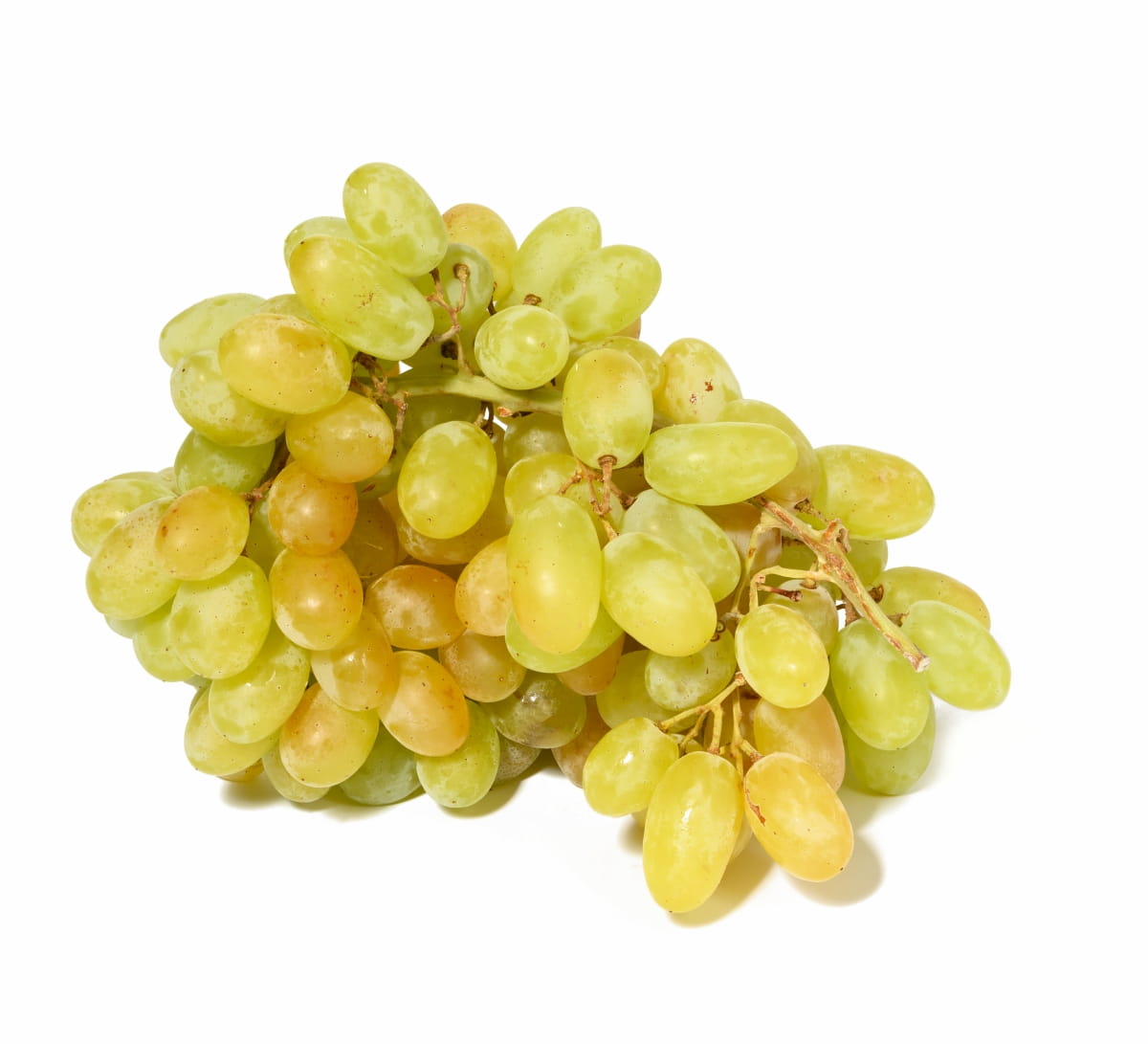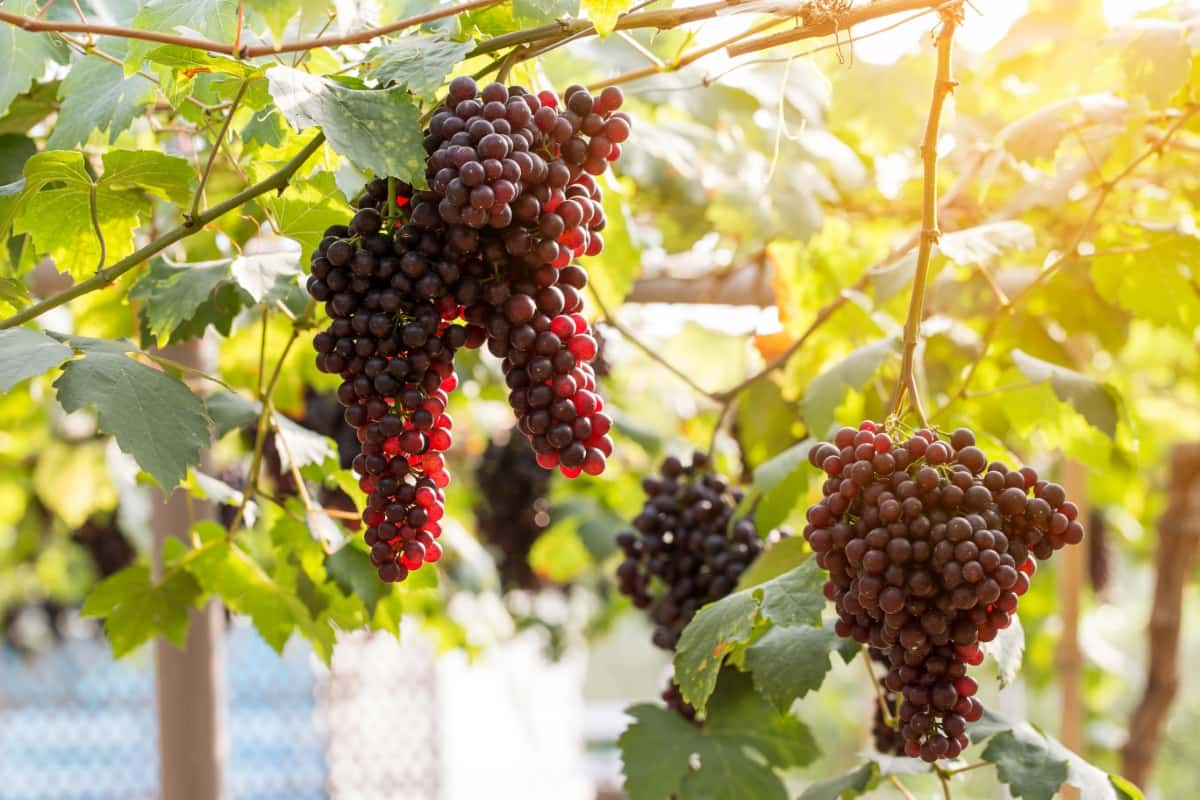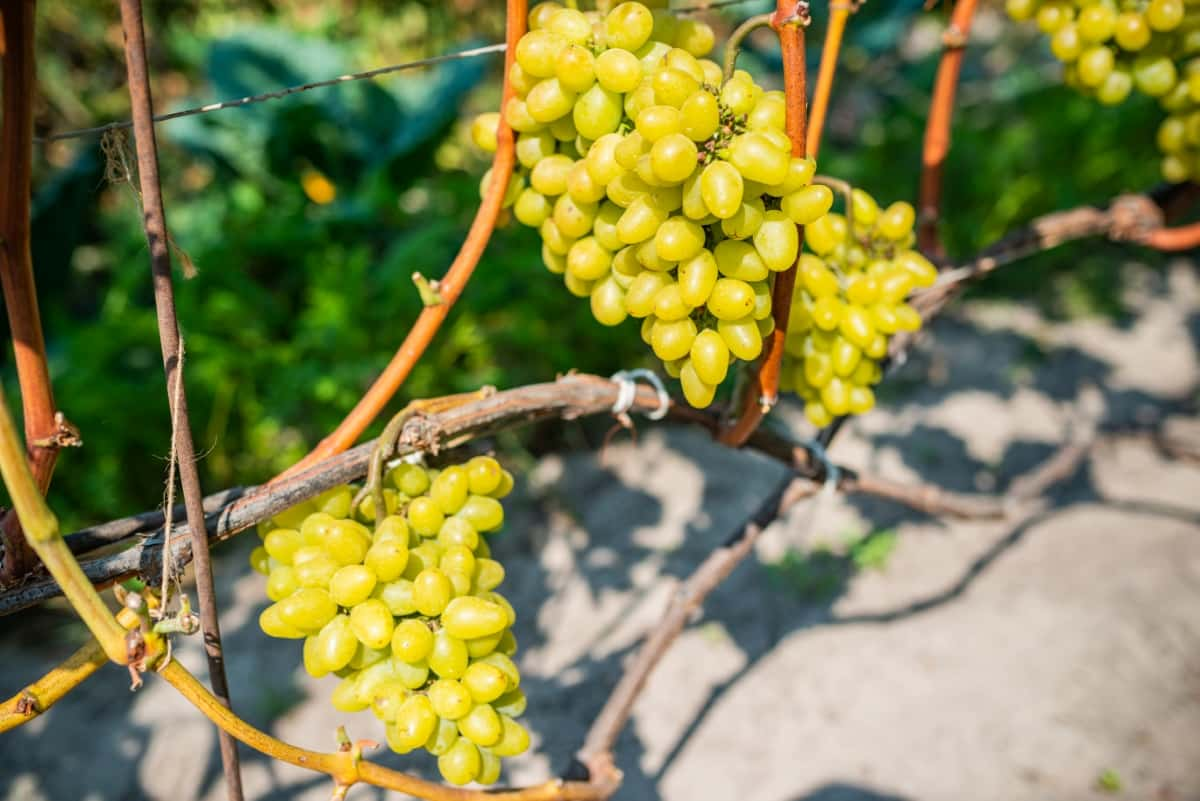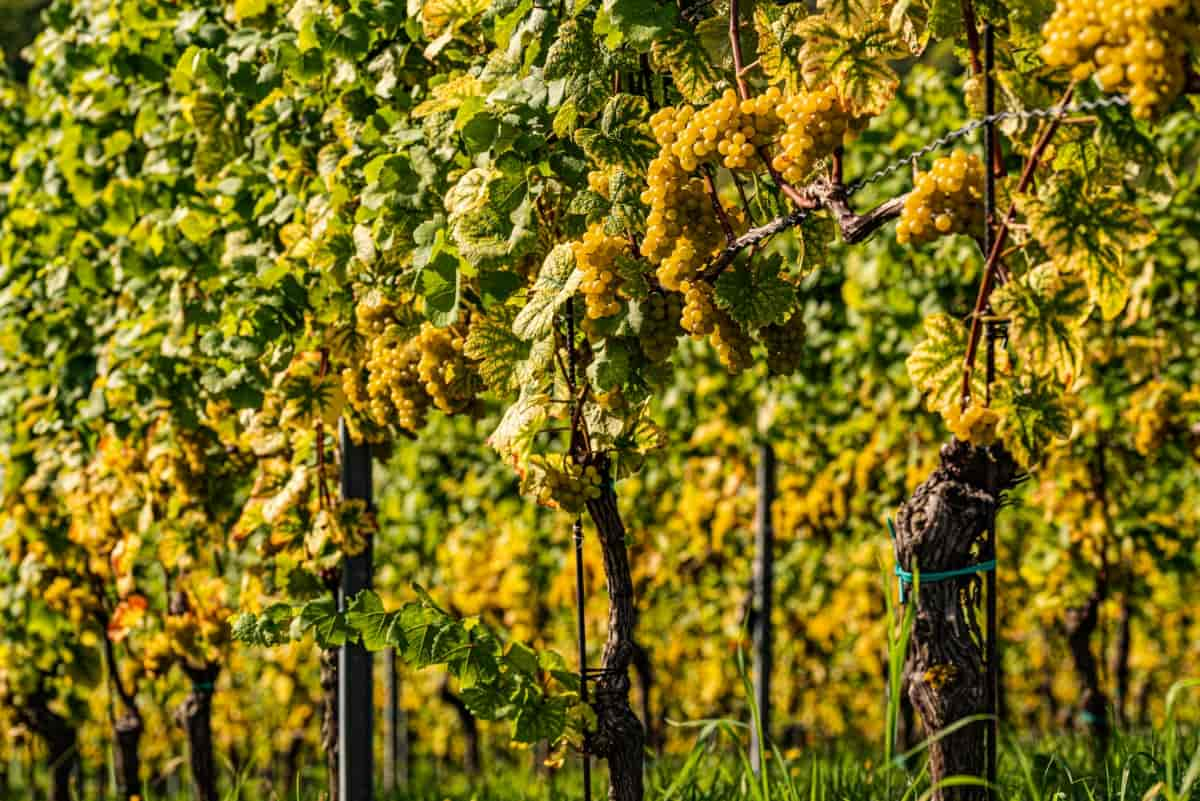Growing seedless Grapes is a rewarding and enjoyable experience for any home gardener. By cultivating seedless Grapevines in your garden or backyard vineyard, you contribute to biodiversity preservation efforts. Growing seedless Grapes provides an appropriate option for those who prefer not to deal with the hassle of seeds while enjoying their favorite fruit.

Growing Seedless Grapes
Understanding the Basics of Seedless Grapes
Seedless Grapes are a delicious and convenient fruit used fresh or in various culinary creations. Seedless Grapes have become popular among fruit enthusiasts for their convenient and enjoyable eating experience. As the name suggests, seedless Grapes are varieties of Grapes that do not contain any seeds. This makes them easier to consume, as there is no need to spit out or remove any unwanted seeds. Seedless Grapes are delicious and packed with essential nutrients that can benefit your overall health.
Choosing the Right Variety: Picking Seedless Grape Varieties
Choosing the right variety of seedless Grapes is crucial for a successful harvest. There are several popular options, each with unique characteristics and flavors. Thompson seedless Grapes are known for their sweet and juicy taste; they are perfect for eating fresh or making raisins. The compact clusters and thin skin make them easy to harvest.
Concord Grapes, on the other hand, have a distinctive flavor that is often associated with Grape juice and jelly. They are known for their deep purple color and robust sweetness. Flame seedless Grapes might be your top pick if you prefer a sweeter option. These red beauties offer an intense burst of sweetness with every bite. They also have a crisp texture that adds an enjoyable crunch to any fruit salad.
Preparing the Soil for Seedless Grapes Plantation
Soil preparation is an important step in ensuring the successful growth of seedless Grapes. Start by testing the soil pH level. Seedless Grapes thrive in slightly acidic to neutral soil with a pH level of 6 and 7. Next, ensure that the soil has good drainage.
Planting the Grapevines: Step-By-Step Instructions
- First, choose a location for your Grapevines that receives full sunlight. This will help the vines thrive and produce abundant fruit. Make sure the soil is well-draining and has good fertility.
- Next, prepare the soil by removing weeds or grass and loosening it with a garden fork or tiller.
- Dig holes wide enough to accommodate the root system of each vine. The depth should be slightly deeper than the length of the roots.
- Carefully place each vine in its hole, ensuring the graft union is positioned above ground level. Spread out the roots gently and backfill with soil, firming it around the base of each plant.
- Water the Grape plant thoroughly after planting to settle the soil around the plant roots and provide moisture for establishment.
- To support your Grapevines as they grow, install trellises or stakes nearby. These structures will help train the vines upward while providing stability against wind or heavy fruit loads.
- Monitor your Grapevines closely during their first few years of growth, paying attention to any signs of pests or diseases. Early detection allows for prompt treatment if necessary.
- As your Grapevines mature and produce fruit, continue pruning annually during dormancy to maintain their shape and promote airflow through foliage – this helps prevent disease development.
In case you missed it: 9 Causes of Dying Grape Vines and How to Fix Them

Providing Adequate Sunlight and Water
These plants thrive in full sun, so choosing a location that receives approximately 6 to 8 hours of direct sunlight daily is important. Seedless Grapes require regular watering throughout the growing season, especially during dry spells or hot weather. Be sure to provide deep irrigation rather than light sprinkling, encouraging the roots to grow deeper into the soil.
Pruning and Training Techniques: Shaping and Supporting Your Grapevines
Properly pruning and training your Grapevines can ensure they receive adequate sunlight, air circulation, and nutrients to thrive. The important technique is cane pruning, where you select the best canes from the previous season’s growth to retain for fruiting. These canes are then trained along a trellis or support system, ensuring their upward growth while maintaining an open canopy. Training your Grapevines also involves providing proper support structures such as trellises or wires. Pruning should typically be done during late winter or early spring dormancy before bud break.
Fertilizing and Mulching: Nourishing Your Seedless Grape Plants
By providing the right nutrients and maintaining optimal soil conditions, you can promote healthy plant growth and enhance the overall quality of your Grapes. When it comes to fertilizing seedless Grape plants, timing is crucial. It’s best to apply fertilizer in early spring before new growth begins. Mulching is another important step in caring for your seedless Grape plants. A layer of organic mulch around the Grape plant base helps retain moisture in the soil, suppresses weed growth, regulates soil temperature, and improves overall soil health.
Managing Pests and Diseases: Preventing and Treating Common Issues
To start, it’s important to regularly inspect your Grapevines for any signs of pests or diseases. Look for common culprits like aphids, mites, powdery mildew, or black rot. Early detection is crucial in preventing these problems from spreading. The effective method of prevention is practicing good sanitation in your vineyard. Another useful technique is using natural predators to control pest populations.
Introducing beneficial insects can help keep pests in check without resorting to harmful chemicals. Various organic treatments are available that target specific issues while minimizing environmental harm. For example, neem oil can be used against aphids and other soft-bodied insects by suffocating them without harming beneficial bugs like bees. Sulfur-based fungicides are effective against powdery mildew but should be applied before symptoms appear, as they don’t cure an existing infection.
Harvesting and Storing Seedless Grapes: Maximizing Flavor and Shelf Life
To harvest your seedless Grapes, gently cut them from the vine using sharp pruning shears or scissors. Be careful not to damage any surrounding Grape clusters or foliage. Harvesting early in the morning or late in the evening when temperatures are cooler is best, as this helps preserve their freshness.
Once harvested, it’s important to handle your seedless Grapes with care. When it comes to storage, keep your seedless Grapes refrigerated at around 0-2C. This will help maintain their quality for up to two weeks. If you plan to enjoy them later, consider freezing them for longer-term storage.
In case you missed it: Seedless Grapes Crop Profile: Cultivation Practices, Varieties, Fertilizers, and Yield

Troubleshooting Common Problems of Growing Seedless Grapes
Poor fruit set – This means that the Grapevines are not producing as many fruits as expected or desired. To remedy this, you can hand-pollinate the flowers using a soft brush or a balanced fertilizer to provide the necessary nutrients.
Overwatering – Overwatering is another issue that may arise when growing seedless Grapes. Excessive soil moisture can be affected by root rot and other fungal infections. Watering your Grapevines deeply but infrequently is important.
Improper pruning techniques – It can hinder the growth and productivity of your seedless Grapes. During dormancy, it’s essential to prune by removing dead or diseased wood and thinning out excessive growth to allow better airflow through the vines.
Frequently Asked Questions about Growing Seedless Grapes
Are Seedless Grapes Naturally Grown?
Seedless Grapes were originally a natural mutation that prevented the young seeds from maturing and developing a hard coat. This unique characteristic allowed Grape growers to cultivate varieties without the annoyance of seeds.
How Do They Get Seeds for Seedless Grapes?
Interestingly, even seedless Grape varieties do sometimes produce small numbers of seeds. These occasional tiny seeds allow new types to be crossbred by plant breeders. These breeders can develop new and improved seedless Grape varieties through careful selection and cultivation methods.
Can I Grow My Seedless Grapes at Home?
Yes. You can grow your delicious bunches of seedless Grapes right in your backyard or garden space with proper care and attention.
How Long Does It Take for Seedless Grapes to Grow?
The time it takes for seedless Grapevines to mature and produce fruit varies based on the variety and growing conditions. It can take about 2 to 4 years to start seeing a bountiful harvest.
In case you missed it: Grape Farming Cost and Profit: 1-Acre Project Report and Production Economics

Conclusion
Growing your seedless Grapes enables you to have control over the cultivation process. Planting Grapevines is an exciting and rewarding process that can bring delicious, homegrown seedless Grapes right to your backyard. Growing seedless Grapes can provide a multitude of benefits to both home gardeners and commercial growers.
- Feed Your Flock for Less: Top 10 Tips to Save on Chicken Feed
- Ultimate Guide to Ossabaw Island Hog: Breeding, Raising, Diet, and Care
- Hatching Answers: The Top 10 Reasons Your Chickens Aren’t Laying Eggs
- Eggs and Economics: Breaking Down the Cost of Raising Backyard Chickens
- Defend Your Greens: Proven Methods to Keep Iguanas Out of Your Garden
- Ultimate Guide to Cinnamon Queen Chicken: A Comprehensive Guide for Beginners
- Ultimate Guide to California Tan Chicken: Breeding, Raising, Diet, Egg-Production and Care
- Ultimate Guide to Marsh Daisy Chicken: Breeding, Raising, Diet, and Care
- 10 Types of Chicken Farming Businesses You Can Start for Profits